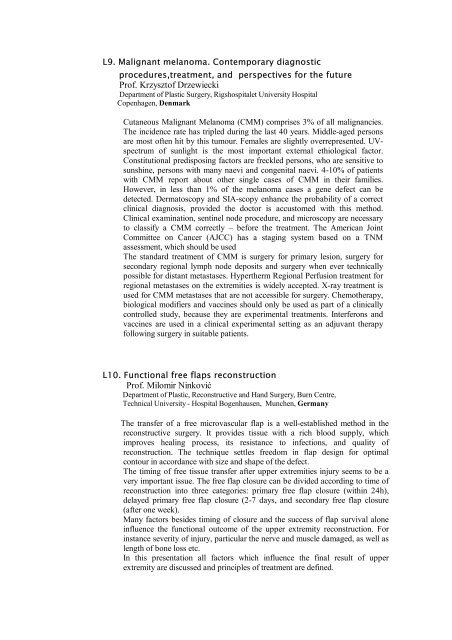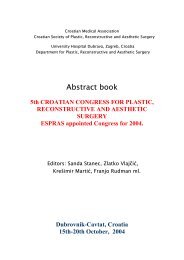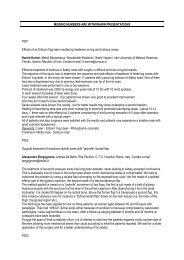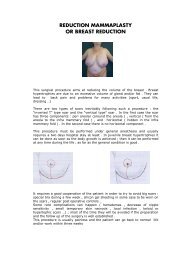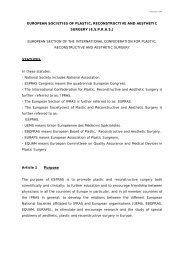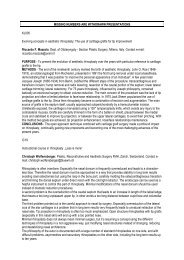Abstract book - ESPRAS
Abstract book - ESPRAS
Abstract book - ESPRAS
Create successful ePaper yourself
Turn your PDF publications into a flip-book with our unique Google optimized e-Paper software.
L9. Malignant melanoma. Contemporary diagnostic<br />
procedures,treatment, and perspectives for the future<br />
Prof. Krzysztof Drzewiecki<br />
Department of Plastic Surgery, Rigshospitalet University Hospital<br />
Copenhagen, Denmark<br />
Cutaneous Malignant Melanoma (CMM) comprises 3% of all malignancies.<br />
The incidence rate has tripled during the last 40 years. Middle-aged persons<br />
are most often hit by this tumour. Females are slightly overrepresented. UVspectrum<br />
of sunlight is the most important external ethiological factor.<br />
Constitutional predisposing factors are freckled persons, who are sensitive to<br />
sunshine, persons with many naevi and congenital naevi. 4-10% of patients<br />
with CMM report about other single cases of CMM in their families.<br />
However, in less than 1% of the melanoma cases a gene defect can be<br />
detected. Dermatoscopy and SIA-scopy enhance the probability of a correct<br />
clinical diagnosis, provided the doctor is accustomed with this method.<br />
Clinical examination, sentinel node procedure, and microscopy are necessary<br />
to classify a CMM correctly – before the treatment. The American Joint<br />
Committee on Cancer (AJCC) has a staging system based on a TNM<br />
assessment, which should be used<br />
The standard treatment of CMM is surgery for primary lesion, surgery for<br />
secondary regional lymph node deposits and surgery when ever technically<br />
possible for distant metastases. Hypertherm Regional Perfusion treatment for<br />
regional metastases on the extremities is widely accepted. X-ray treatment is<br />
used for CMM metastases that are not accessible for surgery. Chemotherapy,<br />
biological modifiers and vaccines should only be used as part of a clinically<br />
controlled study, because they are experimental treatments. Interferons and<br />
vaccines are used in a clinical experimental setting as an adjuvant therapy<br />
following surgery in suitable patients.<br />
L10. Functional free flaps reconstruction<br />
Prof. Milomir Ninković<br />
Department of Plastic, Reconstructive and Hand Surgery, Burn Centre,<br />
Technical University - Hospital Bogenhausen, Munchen, Germany<br />
The transfer of a free microvascular flap is a well-established method in the<br />
reconstructive surgery. It provides tissue with a rich blood supply, which<br />
improves healing process, its resistance to infections, and quality of<br />
reconstruction. The technique settles freedom in flap design for optimal<br />
contour in accordance with size and shape of the defect.<br />
The timing of free tissue transfer after upper extremities injury seems to be a<br />
very important issue. The free flap closure can be divided according to time of<br />
reconstruction into three categories: primary free flap closure (within 24h),<br />
delayed primary free flap closure (2-7 days, and secondary free flap closure<br />
(after one week).<br />
Many factors besides timing of closure and the success of flap survival alone<br />
influence the functional outcome of the upper extremity reconstruction. For<br />
instance severity of injury, particular the nerve and muscle damaged, as well as<br />
length of bone loss etc.<br />
In this presentation all factors which influence the final result of upper<br />
extremity are discussed and principles of treatment are defined.


